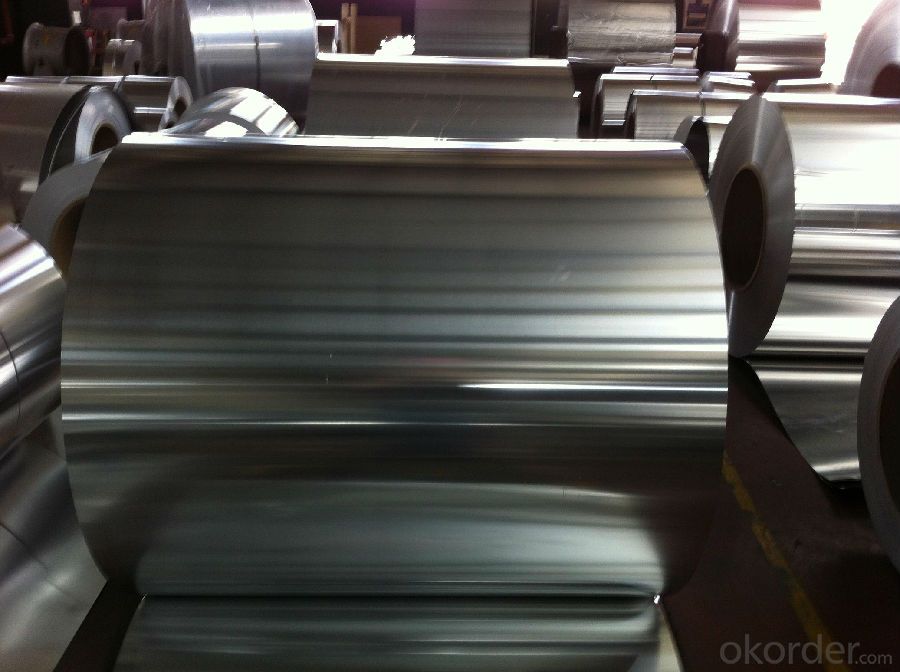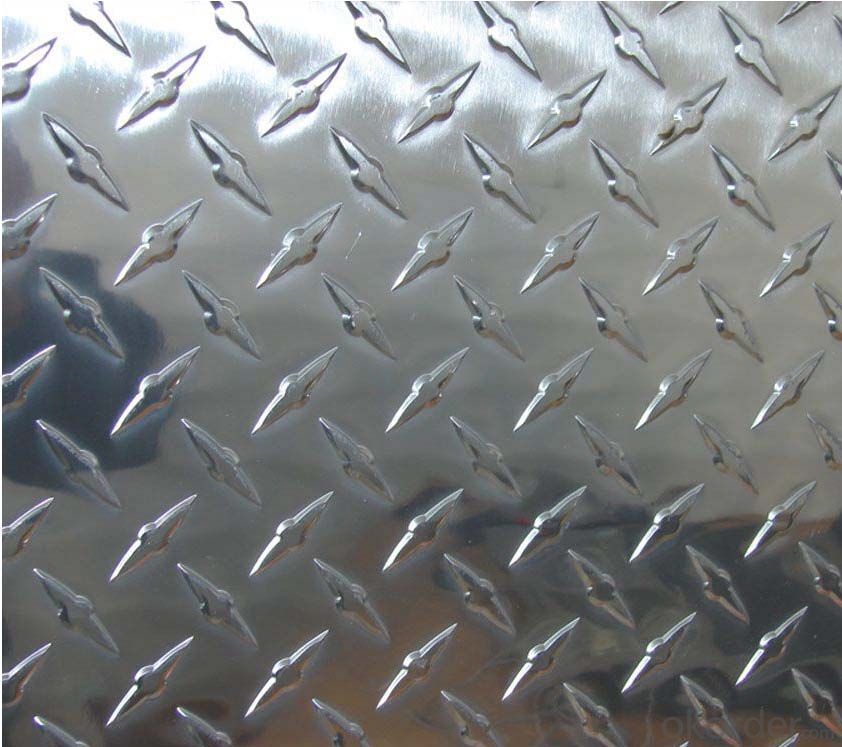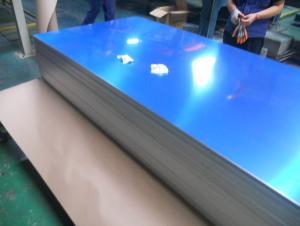Continuous Casting Aluminium Coils for Rolling
- Loading Port:
- Shanghai
- Payment Terms:
- TT OR LC
- Min Order Qty:
- 5 m.t.
- Supply Capability:
- 50000 m.t./month
OKorder Service Pledge
OKorder Financial Service
You Might Also Like
Item specifice
1.Structure of Continuous Casting Aluminium Coils for Rolling
Continuous Casting Aluminium Coils for Rolling is one semi-finished aluminium material. This strip can be rolled down to aluminium coil,sheet,circle ect. The alloy AA1050 is widly used in building, industry ect. Its weight is much lower than steel. So many customers choosed aluminium material instead of steel.
2. Main features of Continuous Casting Aluminium Coils for Rolling
a.Competitive price---We have our own mills and can produce mill finished aluminium coils, so we can control the production cost better.
b.Professional after-sale service---We have more than 15 years exportation experience and you need not worry about the exporation problems.
c.Fast delivery time---We can control the delivery time within 35 days.
3. Image



4. Product Specification
| ALLOY | TEMPER | ROLLING | THICKNESS | WIDTH |
| AA1050 | H14 | CONTINUOUS CASTING | 0.2MM-3MM | 1000MM-1500MM |
5.FAQ:
What is the quality standard?
---Usually our standard is GB3880-2006
What is the largest width?
---It is 2300mm
What is the MOQ?
---Usually we can accept 80 tons.
- Q:What are the different thickness tolerances for aluminum sheets?
- The thickness tolerances for aluminum sheets can vary depending on the specific grade and manufacturing process, but generally they range from ±0.005 inches to ±0.015 inches.
- Q:What is the corrosion resistance of 101 aluminum sheets in saltwater environments?
- The corrosion resistance of 101 aluminum sheets in saltwater environments is generally considered to be good. However, prolonged exposure to saltwater can still cause some level of corrosion over time.
- Q:What are the common thicknesses of aluminum sheets used in transportation industry?
- In the transportation industry, aluminum sheets are commonly used for various applications due to their lightweight, durability, and corrosion resistance. The common thicknesses of aluminum sheets used in the transportation industry typically range from 0.025 inches (0.63 mm) to 0.125 inches (3.18 mm). For applications such as automotive body panels, which require a balance of weight reduction and structural integrity, aluminum sheets with thicknesses of 0.040 inches (1.02 mm) to 0.063 inches (1.6 mm) are commonly utilized. These thicknesses provide sufficient strength while keeping the weight of the vehicle lower compared to steel counterparts. In the aerospace industry, where weight reduction is of utmost importance, thinner aluminum sheets are often used. Thicknesses ranging from 0.025 inches (0.63 mm) to 0.040 inches (1.02 mm) are commonly employed in the construction of aircraft structures, including wings, fuselage panels, and interior components. It is worth noting that the specific thicknesses of aluminum sheets used in the transportation industry can vary depending on the specific application, regulatory requirements, and design considerations. Therefore, it is essential to consult the relevant industry standards and specifications for precise information on the preferred thicknesses for different transportation applications.
- Q:What are the different joining methods for aluminum sheets?
- Aluminum sheets can be joined using various methods, each with its own advantages and considerations. Common techniques for joining aluminum sheets include: 1. Welding: Aluminum sheets can be welded together by melting them and using a filler material. Welding techniques like gas tungsten arc welding (GTAW), gas metal arc welding (GMAW), or laser welding are commonly used. Welding creates strong and durable joints, but it requires skilled labor and can be time-consuming. 2. Adhesive bonding: Another method is adhesive bonding, where a specialized adhesive or glue is applied to the surfaces to be joined. Adhesive bonding offers benefits like excellent corrosion resistance, uniform stress distribution, and the ability to join different materials. However, it requires proper surface preparation and can be affected by temperature and humidity. 3. Mechanical fastening: Mechanical fastening involves using bolts, screws, rivets, or clips to join aluminum sheets. It is a simple and cost-effective method that allows for easy disassembly if needed. However, it may create stress concentrations around the fasteners and the joints may not be as strong as welded ones. 4. Friction stir welding: Friction stir welding is a newer method gaining popularity for aluminum sheets. It involves rotating a non-consumable tool along the joint line, generating friction and heat that softens and joins the sheets. Friction stir welding offers benefits like high joint strength, low distortion, and defect-free welds. However, it requires specialized equipment and is limited to certain sheet thicknesses. 5. Clinching: Clinching is a cold joining method that deforms the sheets using a punch and die without melting them. The sheets are pressed together under high pressure, creating a mechanical interlock. Clinching is a fast and cost-effective method that doesn't require additional materials, but it may cause visible surface deformation. When choosing a joining method for aluminum sheets, factors like joint strength, corrosion resistance, aesthetics, production cost, and specific application requirements should be considered. Each method has its own advantages and limitations, so the most suitable technique depends on the project's specific needs.
- Q:Can aluminum sheet be used for medical applications?
- Yes, aluminum sheet can be used for certain medical applications. It is commonly utilized in medical equipment, such as imaging machines, as it is lightweight, durable, and has good electrical conductivity. However, it is important to note that aluminum's use in direct contact with the human body or in implants is limited due to potential health concerns and the availability of more suitable materials.
- Q:What are the different cutting tools used for aluminum sheets?
- There are several cutting tools that can be used for aluminum sheets, including power shears, hacksaws, circular saws with carbide-tipped blades, and plasma cutters. Each tool has its own advantages and is suitable for different applications depending on the thickness and size of the aluminum sheet.
- Q:I have a lot of old aluminum cake pans, coffee pots, pots and pans and various old nuts and bolts made of aluminum. Would it be worth it to scrap them? They really aren't usable for cooking anymore. They are clean.
- Aluminum is around 80 cents - 1$ per lb depending on grade. For current pricing you can try www.scrapmetalpricesandauctions.c...
- Q:How are aluminum sheets manufactured?
- Rolling is the process by which aluminum sheets are made. It begins with aluminum ingots that are heated and then passed through rolling mills. These mills, made of steel, have rotating rollers that squeeze and stretch the aluminum as it passes between them. This continuous rolling process refines the grain structure of the aluminum and improves its mechanical properties. To ensure the desired thickness and surface finish, the aluminum sheets may go through multiple passes in the rolling mills. Each pass gradually reduces the sheet's thickness until the desired thickness is reached. The final pass also gives the sheet its desired surface finish. After rolling, the aluminum sheets may undergo additional treatments like annealing or surface treatments. Annealing involves heating the sheets to a specific temperature and slowly cooling them to improve their strength and relieve internal stresses. Once manufactured and treated, the aluminum sheets are typically cut into desired sizes and shapes. This can be done through shearing with sharp blades or using specialized cutting machines. In summary, the manufacturing of aluminum sheets is a precise and intricate process that involves heating, rolling, treating, and cutting the aluminum to achieve the desired thickness, finish, and properties.
- Q:What are the thermal conductivity properties of aluminum sheets?
- Aluminum sheets have excellent thermal conductivity properties. The thermal conductivity of aluminum is approximately 237 Watts per meter-Kelvin (W/mK), which is significantly higher compared to other commonly used metals such as steel or copper. This means that aluminum sheets are highly efficient in transferring heat across their surface. Aluminum's high thermal conductivity allows it to quickly conduct and distribute heat, making it an ideal choice for various applications that require efficient heat transfer, such as heat exchangers, cooling systems, and heat sinks. Additionally, aluminum's lightweight nature and corrosion resistance further contribute to its popularity in thermal management applications. Overall, aluminum sheets offer excellent thermal conductivity properties, making them a preferred material in industries where efficient heat transfer is crucial.
- Q:How to polish aluminum sheet to be bright?
- as for polishing, fine grit sandpaper can't polish it into a mirror,but laser cutting can do it.
1. Manufacturer Overview |
|
|---|---|
| Location | |
| Year Established | |
| Annual Output Value | |
| Main Markets | |
| Company Certifications | |
2. Manufacturer Certificates |
|
|---|---|
| a) Certification Name | |
| Range | |
| Reference | |
| Validity Period | |
3. Manufacturer Capability |
|
|---|---|
| a)Trade Capacity | |
| Nearest Port | |
| Export Percentage | |
| No.of Employees in Trade Department | |
| Language Spoken: | |
| b)Factory Information | |
| Factory Size: | |
| No. of Production Lines | |
| Contract Manufacturing | |
| Product Price Range | |
Send your message to us
Continuous Casting Aluminium Coils for Rolling
- Loading Port:
- Shanghai
- Payment Terms:
- TT OR LC
- Min Order Qty:
- 5 m.t.
- Supply Capability:
- 50000 m.t./month
OKorder Service Pledge
OKorder Financial Service
Similar products
New products
Hot products
Related keywords





























